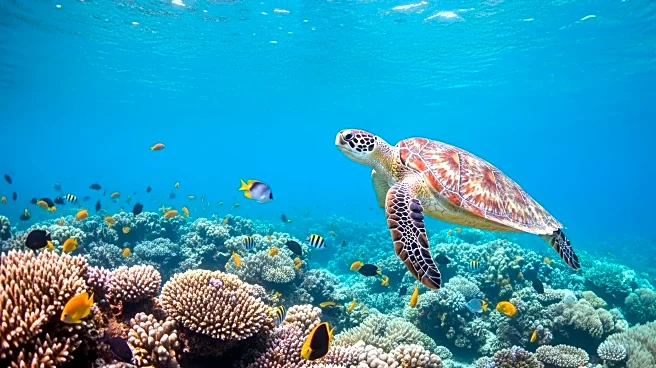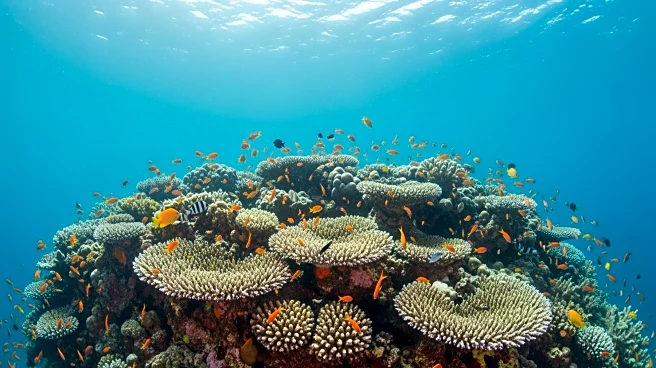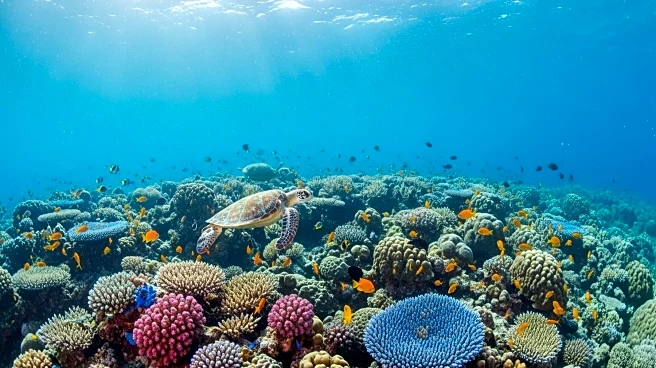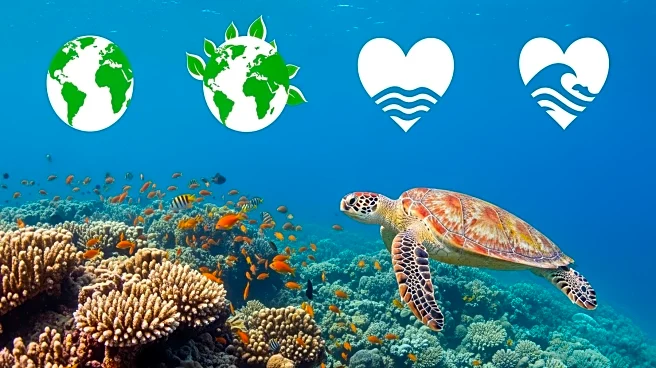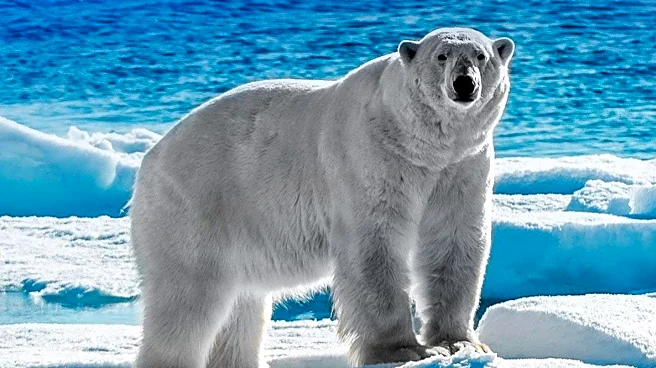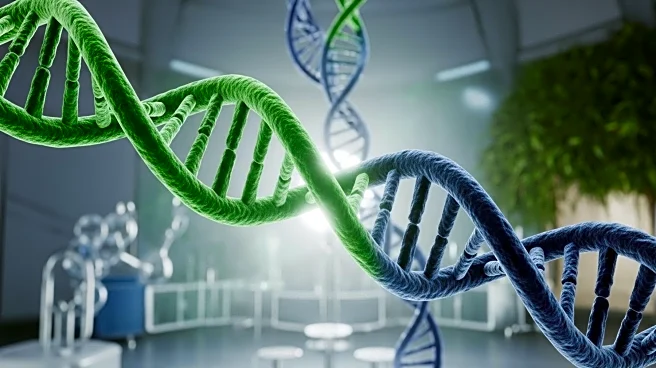What's Happening?
The International Union for Conservation of Nature (IUCN) has announced that green sea turtles are no longer classified as endangered. This development follows decades of conservation efforts aimed at increasing
their population. Bryan Wallace, who led the assessment for sea turtles, noted that the population has seen a significant increase in the number of egg-nesting sites since the 1970s. Despite ongoing threats such as fisheries bycatch, which can accidentally entangle turtles, the population has rebounded. Green sea turtles, which can live as long as humans and grow up to four feet long, are found in regions from the Caribbean to the Indian Ocean. Historically, their numbers were so abundant that explorers like Columbus could navigate by the sounds of their shells hitting ships. The report highlights the effectiveness of conservation efforts when executed correctly.
Why It's Important?
The rebound of the green sea turtle population is a significant milestone in global conservation efforts, demonstrating that targeted actions can lead to positive outcomes for endangered species. This success story provides hope and a model for other conservation initiatives, especially as many species continue to face threats of extinction. The report also underscores the importance of continued vigilance and action to maintain these gains, as other species, such as Arctic seals and numerous bird species, are still in decline. The recovery of the green sea turtle population can inspire further conservation efforts and encourage public engagement in environmental protection.
What's Next?
Continued conservation efforts are essential to ensure the sustained recovery of green sea turtles and other endangered species. The IUCN emphasizes the need to maintain momentum by identifying successful strategies and applying them to other conservation challenges. Stakeholders, including governments, environmental organizations, and local communities, are encouraged to collaborate and invest in conservation programs. The report suggests that public awareness and involvement can play a crucial role in supporting these initiatives, urging individuals to find and protect local natural treasures.
Beyond the Headlines
The success of the green sea turtle conservation efforts highlights broader ethical and cultural dimensions of environmental stewardship. It reflects a growing recognition of the interconnectedness of human actions and natural ecosystems. This development may influence public policy and cultural attitudes towards conservation, fostering a sense of responsibility and proactive engagement in preserving biodiversity. The story of the green sea turtle serves as a reminder of the potential for positive change when communities unite to protect the environment.
